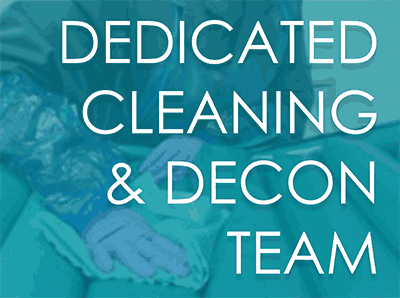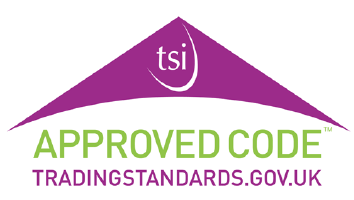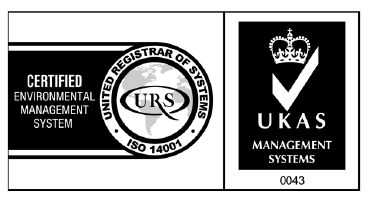I have come across many alternating pressure relieving mattress systems during my 20+ years working in the pressure care industry – some good and some very good. Equally, I have witnessed an increasing number of alternating pressure relieving mattress and static foam mattress products creeping into the community healthcare market, that let’s say, leave a lot to be desired…
So, what is an alternating pressure relieving mattress… or a pressure redistributing mattress, pressure relief mattress, active pressure mattress, dynamic pressure mattress or even an alternating pressure cushion for that matter? Within pressure care or pressure area care, you will immediately recognise there is an abundance of confusing industry speak.
Well, for those who aren’t aware, a pressure relief support surface can often be described as either static or active (also referred to as ‘dynamic’ or ‘alternating’). This also applies to seating too. There can be a chasm of difference in characteristics from one product to the next (so be careful when choosing), I have split the two groups to provide you with further insight.
In recent times, European Pressure Ulcer Advisory Panel has classified the terms ‘reactive surface’ and ‘active surface’ for describing a type of support surface, but you will commonly hear these devices being described by their historical labels as mentioned above.
‘Low air loss’ too is an active surface – a system designed with purposely positioned micro air loss holes, intended to keep the patient cool and dry, utilising a high-tech and efficient blower to optimize pressure relief and comfort by enveloping the cared for across the entire support surface. Another type of active surface is a ‘hybrid’ – the combined use of foam and air. I will talk more about these systems in future posts.
Static Mattress (Reactive Surface)
Static pressure mattresses are manufactured mainly from specific high grades of Combustion Modified High Resilience (CMHR) foam and offer pressure redistributing therapy by spreading a patient’s weight over a large area at continuous low pressure. Static mattresses can also be produced from ‘gel’ type products, but this often makes the mattress extremely heavy and difficult to move, presenting manual-handling risks for the carer. Gel statics, are however, very popular as pressure cushion devices.
I will talk more about gel and static air products and their use in the future, but for today, I’ll concentrate mainly on the static CMHR foam devices.
The foam used in the construction of the mattress is designed to mould around the patient’s body, spreading the patients weight and alleviating the pressure at (predominately) the bony areas of the body where pressure ulcers are most likely to occur. This is a key feature of any static device – to minimise shear force and evenly distribute pressure across the whole support surface. I think it’s important to note, at this point, the composite of inner foam core and mattress cover plays a key part in this process. The best foam with the wrong type of cover will provide poor performance and vice-versa. At the same time, the best foam and cover combinations can also achieve adverse results affected by the manufacturing of an ill-fitted outer cover.
Amongst the principal mattress and seating suppliers to the pressure care industry, companies have universally adopted the use of CMHR foams used in the manufacture of static pressure care support surfaces. These foams have good fire retardant properties rated to relevant BS standards and their high resilience factors, a measure of the bounce or spring back properties, makes for a long-lasting support surface.
Have you ever purchased a static pressure mattress??? Did you really know what you were buying – how good the product was or was price the deciding factor? Well, I believe if you are going to invest in a pressure mattress for someone you are caring for, you’ll do well to stay away from any 5” (125mm) deep static foam mattress – it simply won’t last!
To provide you with a little more insight into the use of CME foam in pressure relieving mattress manufacturing, I will shed a little more light on how foam is measured for density and hardness. Density is measured in kilograms per cubic metre. It tells you how heavy the foam is or, to put another way, how much matter as opposed to air there is in it. Imagine an Aero chocolate bar, well polyurethane foam takes on similar characteristics. In general, what the density tells you is how durable certain foams are – how much punishment they will take before deteriorating. Manufacturers of static pressure mattress and cushions will often refer to foam density when describing the quality of the foam.
One important point to note about density is it is not necessarily the same as hardness; this is measured separately. Hardness is measured in terms of how much force is needed to depress a piece of foam by a given percentage of its thickness and is calculated in units known as Newton’s. Once again, the key suppliers to the industry will use particular branded CMHR foams that are produced specifically for retaining their firmness for longer – they are generally more expensive too.
If you’re in the market to buy static foam pressure mattresses, make sure you are investing in good quality from a reputable supplier!
Finally, I will quickly finish off this section with three more measures that are appealing to the pressure mattress manufacturer, but not required for essential everyday knowledge when considering a grade of foam for producing a static pressure mattress or cushion and they are ‘tensile strength’ – how easily it breaks if you stretch it, ‘elongation’ – how elastic it is and ‘compression set’ – how much it flattens out with continuous use.
Make certain you take a little more time over your next pressure care foam mattress purchase, remembering to consider the foam, its top cover and that your supplier is credible. Don’t be immediately turned off by the upfront cost either – you might be saving in the longer-term!
Alternating Pressure Mattress (Active Surface)
Alternating pressure relieving mattress systems are powered devices designed to periodically redistribute pressure by repeatedly loading and unloading the pressure beneath the body. Unloading, or peak pressure purging, is typically achieved through the cyclic movement of a series of air cells, bringing about the more traditional description of ‘alternating therapy’ or ‘dynamic air pressure mattresses’.
I have a strong passion for this subject, and if I’m honest (and I believe I am), I have always tried to balance efficacy with comfort before bringing an alternating pressure relieving mattress to market, whether under a Select Medical brand or via private label. The fundamental structure of some cell designs means comfort is not always easy to achieve, and on these occasions, you have to side with efficacy. The perfect example of this is with the overlay air cell design. By the very nature of its round design, the gap at the top of the inflated overlay air cell is quite wide and the smaller person can fall between the inflated air cells. Consequently, this provides an uncomfortable surface for the cared for. To combat this and to achieve anywhere near the levels of patient comfort I’m aiming for, consideration needs to be given to the carefully managed transition of air from one bank of cells to the next to provide a reasonable level of all-round patient comfort and care.
For delivering pressure care to specific people types, you are better served to design a more suitable air cell structure for precise pressure care and comfort. For example, caring for children and smaller individuals, we have successfully managed to create a smaller narrower air cell that provides optimal support and enhanced comfort – this particular alternating pressure relieving mattress system is produced under our Pure Air brand.
Unlike reactive foam and air surfaces, the cyclical pressure redistribution of an alternating pressure relieving mattress system continues even in the absence of patient movement. An active system can be of a ‘mechanical’ or ‘digital’ type in its capacity to adjust internal cell pressures for patient comfort. How successful a system achieves optimal immersion, for the cared for, over each cycle can determine both how comfortable and clinically effective the support surface is considered – this will vary from patient to patient.
After a period of meticulous design processing, I personally favour producing alternating pressure relieving mattress systems utilising a two cell system. I consider two cell systems to offer the best in terms of therapy for the cared for, and through a delicately controlled changeover process of sequentially and gently moving air from one bank of air cells to the next, I have seen some wonderful successes. This formula for an alternating pressure relieving mattress helps minimise shear force and the potential for soft tissue distortion.
Although I have a personal preference for the two cell alternating pattern, I’m a long admirer of Talley and some of their products too – they have a proud heritage in pressure care and set a benchmark for other alternating pressure relievng mattress companies like ourselves, Arjohuntleigh and Hill-Rom to follow. Here at Select Medical, the ambition for our pressure care brands is to continue building quality products that touch the lives of many and create a better everyday life for care providers, carers and the cared for across the world.
Over the years, I have witnessed excellent results in patient care achieved with the use of an alternating pressure relieving mattress. I must add that as a rule of thumb, generally across the wide range of alternating pressure relieving mattress systems provided by leading suppliers, an 8 out 10 rule should apply to your patients and the use of these support surfaces. By this I mean, there isn’t a single alternating pressure relievng mattress in the market place that is right for every patient and careful consideration should always be given to the type of mattress prescribed for those you care for. A carer should always follow best practices with clinical judgement and continually assess the patient’s needs as risk levels change.
About the author – Ray Booth
Ray Booth is Research & Innovation Director at Select Medical. He has been involved in the pressure care equipment industry for over 20 years, and has created a wide range of well-designed alternating pressure mattress systems for use in hospital, hospice and community healthcare sectors.








